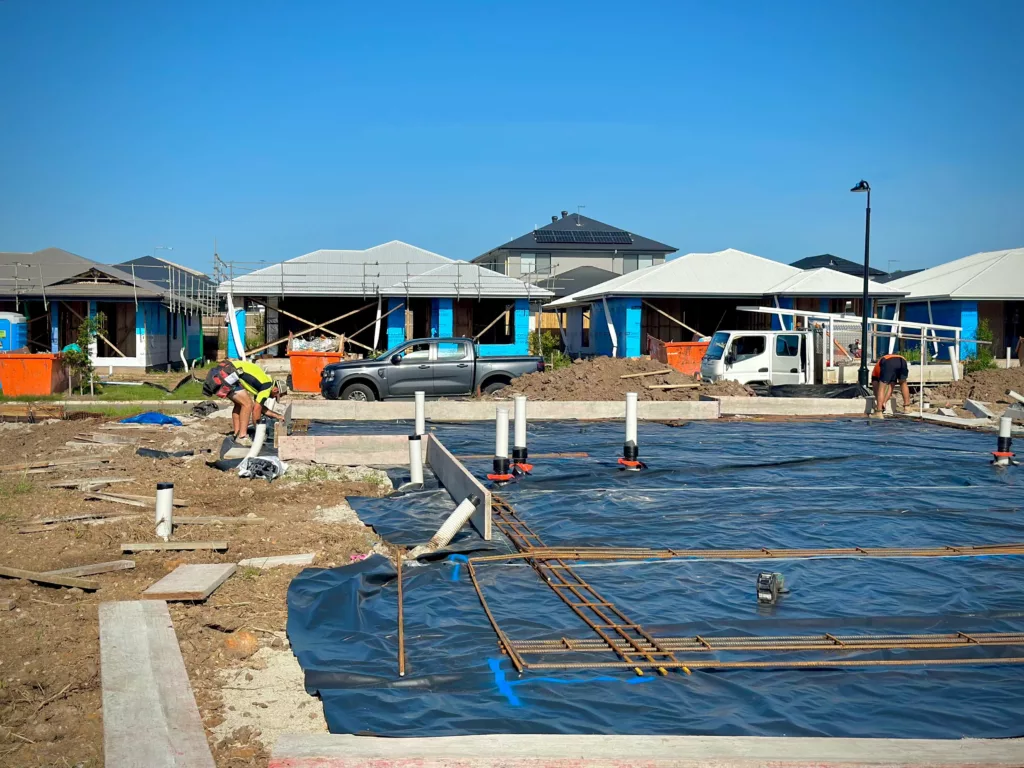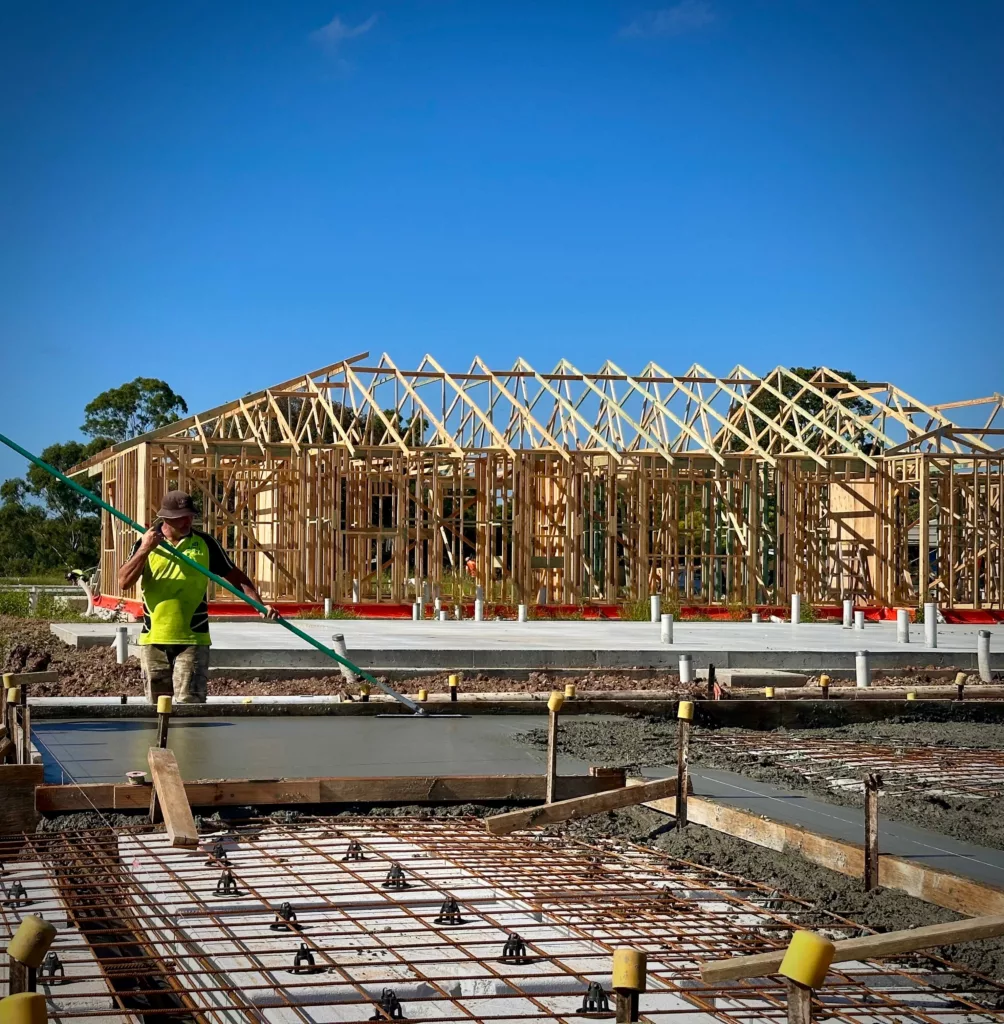
Foundations and Footings
Foundations vs. Footings: What Is The Difference?
It is natural for future home builders to explore the options out there and research what is involved with the build process. As a result, you might be feeling a little overwhelmed by all the jargon. One of the biggest questions you might have is: what’s the difference between foundations and footings? Grab a cup of coffee, and let’s break it down!

Setting the Stage: Foundations and Footings
First things first—let’s talk about what these terms actually mean. You can think of the footing as the unsung hero that literally supports your entire home. It’s what stands between the weight of your house and the ground beneath it. So, what does this component do? Well, footings have a few essential roles:
- Distributes Loads: Footings spread the weight of your home evenly across the ground.
- Anchors Against Winds: They keep your house stable, even when those gusty winds come knocking.
- Moisture Protection: Footings help guard against moisture from the soil coming into your home and help prevent movement due to changes in the moisture content of the soil.

Getting your footings right is crucial for ensuring your home is safe and sound for years to come.
Now, let’s chat about the foundation. This is the actual soil or rock that your home sits on. Sounds simple, right? But it’s super important to test the foundation to ensure it can handle the weight of your future abode. Developers typically start by evaluating the soil to determine what they’re working with. This helps in designing footings that are tailored to the specific conditions of your site.

How Can Soil Type Impact The Build?
Did you know that the type of soil on your property can significantly impact your home’s stability and what it costs to build? For example, if your footings rest on bedrock, you’re in luck! There’s minimal settling there so what you build doesn’t generally move much from today to tomorrow or ten years down the track. Sandy soil on the other hand is quick to settle and then stable.

Now, let’s talk about the trickest soil, which is in fact clay. It can expand or shrink dramatically depending on moisture levels. This means that during heavy rains, clay can swell by up to 50%! And when it dries out, it can shrink just as much. This constant movement can put stress on your footings, leading to cracks in surfaces in your home over time.
While many builders can gauge soil conditions just by stepping onto the site, it is crucial to get a geotechnical report. This report provides detailed insights into your soil type and behavior, helping engineers design a home that can withstand its unique challenges.

Types of Footings in Australia
Now that we’ve laid the groundwork (pun intended!), let’s dive into the different types of footings commonly used in Aussie homes:
- Strip Footings: These continuous lines of support are typically placed in a shallow trench and reinforced with steel. They’re perfect for light loads, like walls in residential properties.
- Stumps: Also known as piles in New Zealand, stumps are great for supporting timber-framed homes. They can be made from timber, concrete, or steel and need a solid footing beneath them for stability.
- Raft Slabs: Raft slabs distribute the building’s weight evenly to minimize movement. There are two popular types of raft slabs in Australia:
- Waffle Raft: Built with waffle pods made of polystyrene, these are laid out carefully based on your home’s design and ground conditions.
- Stiffened Raft: This is an economical option but it’s best for non-reactive soil. The bottom of the slab rests on an unreinforced strip footing or mat foundation with edge beam stiffening and concrete reinforced with rebars to provide strength and stability.
How Deep Do Footings Need To Be?
One of the biggest questions in construction is: how deep should your footings be? The answer isn’t one-size-fits-all. It depends on several factors, including the type of structure, soil conditions, and even local climate influences.

The proper depth will help ensure that your home’s weight is distributed evenly, preventing issues like uneven settling or structural damage.
In Australia, where we have all kinds of soil types and weather conditions, making sure your footings are able to handle everything from frost to water tables is key.

Wrapping It Up
Building a home is no small feat, and understanding the difference between foundations and footings is just the beginning. At Homecorp, we take care of all the nitty-gritty details, including geotechnical reports and engineering checks, so you don’t have to.
A big part of our business is creating House and Land Packages to make it easier for Australian’s to get into the property market and invest in housing. These Turn-Key Packages include plans that we know perform well under local conditions. They are also carefully curated to be sustainable, easy to maintain and cost-effective to retrofit down the track.
Curious about where we’re developing next? Don’t hesitate to reach out to the Homecorp team! We’re here to help you every step of the way. Happy building!






